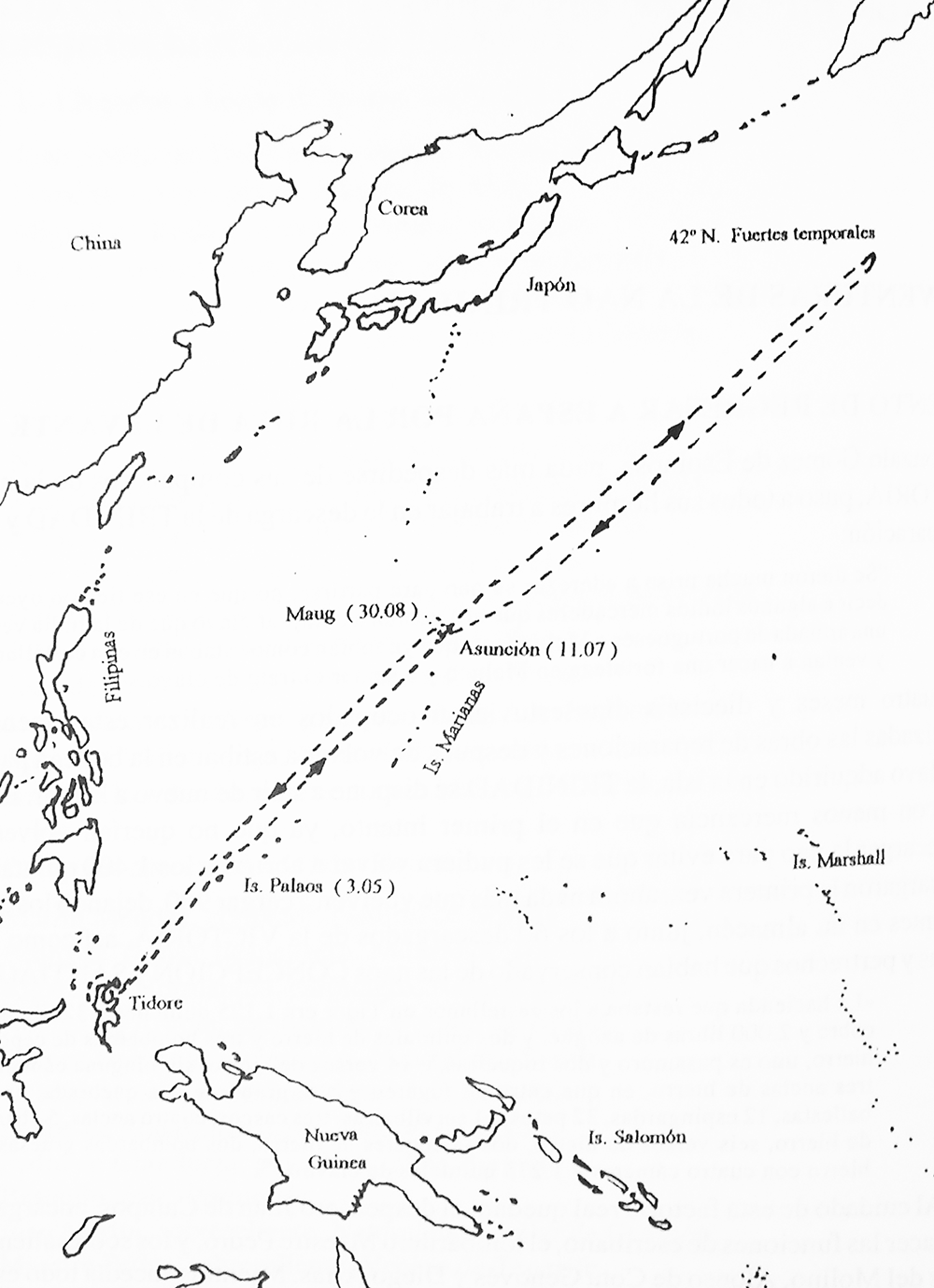
Magellan flagship
The Trinidad was the flag ship of Ferdinand Magellan’s fleet in its expedition for the Spice Islands. It was the best and also the most inexpensive of the five ships (Victoria, Concepcion, Santiago, Trinidad and San Antonio), since its price (270,000 maravedies) was 65 percent lower than the Victoria.
Of these five ships, one was lost at sea (Santiago), one abandoned the expedition (San Antonio) in South America and returned to Spain, one was damaged and then burned by the crew (Concepcion) and lost at Cebu in the Phillipines on 21 December 1521 when Magellan was killed.
The two remaining ships were the Victoria, with Juan Sebastian Elcano as captain and the Trinidad, with Gómez de Espinosa as captain. They made their way to the Moloccus and then attempted to return to Spain by sailing west. However the Trinidad began taking on water and needed to be overhauled. The Victoria was not large enough to accommodate all the surviving crew. So the Victoria and some of the crew sailed west for Spain, arriving there 6 September 1522, almost three years after setting off to circumnavigate the globe.
The Trinidad, which had 205 tons of displacement and 23.46 meters (almost 77- feet) in length, docked in the Moluccas for just a little more than four months as she was being repaired. When the ship was ready, the crew attempted to cross the Pacific again. On 3 May 1522 they passed an island in Micronesia that they named San Antonio (Palau). Two months later on 11 July, they arrived at an island named Cyco (Asuncion which is the third most northerly island in the Marianas chain) in the Marianas archipelago and kidnapped a CHamoru man.
Facing strong storms, with almost no food nor water on board, and practically all of the crew members sick or dying, Espinosa was forced to return to Cyco, but was prevented by bad water from berthing. The captive CHamoru told them to sail north and there would be three islands where they would be able to land. On 30 August 1522, they approached the northern island of Pamo (Maug) which had 20 inhabitants. Crew members replenished the water supply and freed their CHamoru prisoner.
The next day, four sailors disembarked the Trinidad for fear of the uncertainties that lay ahead on the return to Spain. One decided, however, to reboard the Trinidad, while three remained. They were cabin-boy Gonzalo de Vigo, sailor Martín Genovés, and cook Alonso Gonzáles. Four years later de Vigo, the only survivor, was rescued in Rota by the Laoisa expedition enroute to the Spice Islands.
The Trinidad never made it home. It was captured by the Portuguese, and was eventually wrecked in a storm while at anchor under Portuguese control.
Accounts of the expedition
Ginés de Mafra, a sailor on the Trinidad, wrote a partial account of the voyage as did Galician pilot Francisco Albo. Both accounts are part of the few surviving direct sources of the expedition.
It is unclear who the true author of a third account, known as the “Roteiro” is. It is attributed to a “Genovese pilot.” A Genovese sailor on board the Trinidad named León Pancaldo, upon his return to Valladolid, Spain claimed that the Portuguese stole books, maps, and an account of the voyage from him.
For further reading
Bergreen, Laurence. Over the Edge of the World: Magellan’s Terrifying Circumnavigation of the Globe. New York: Harper Collins, 2003.
de Elcano, Juan Sebastián. La Primera Vuelta al Mundo. Madrid: Miraguano Ediciones, 2003.
Fernandez-Vial, Ignacio, and Guadalupe Fernández Morente. La Primera Vuelta al Mundo: La Nao Victoria. Seville: Muñoz Moya, 2001.
